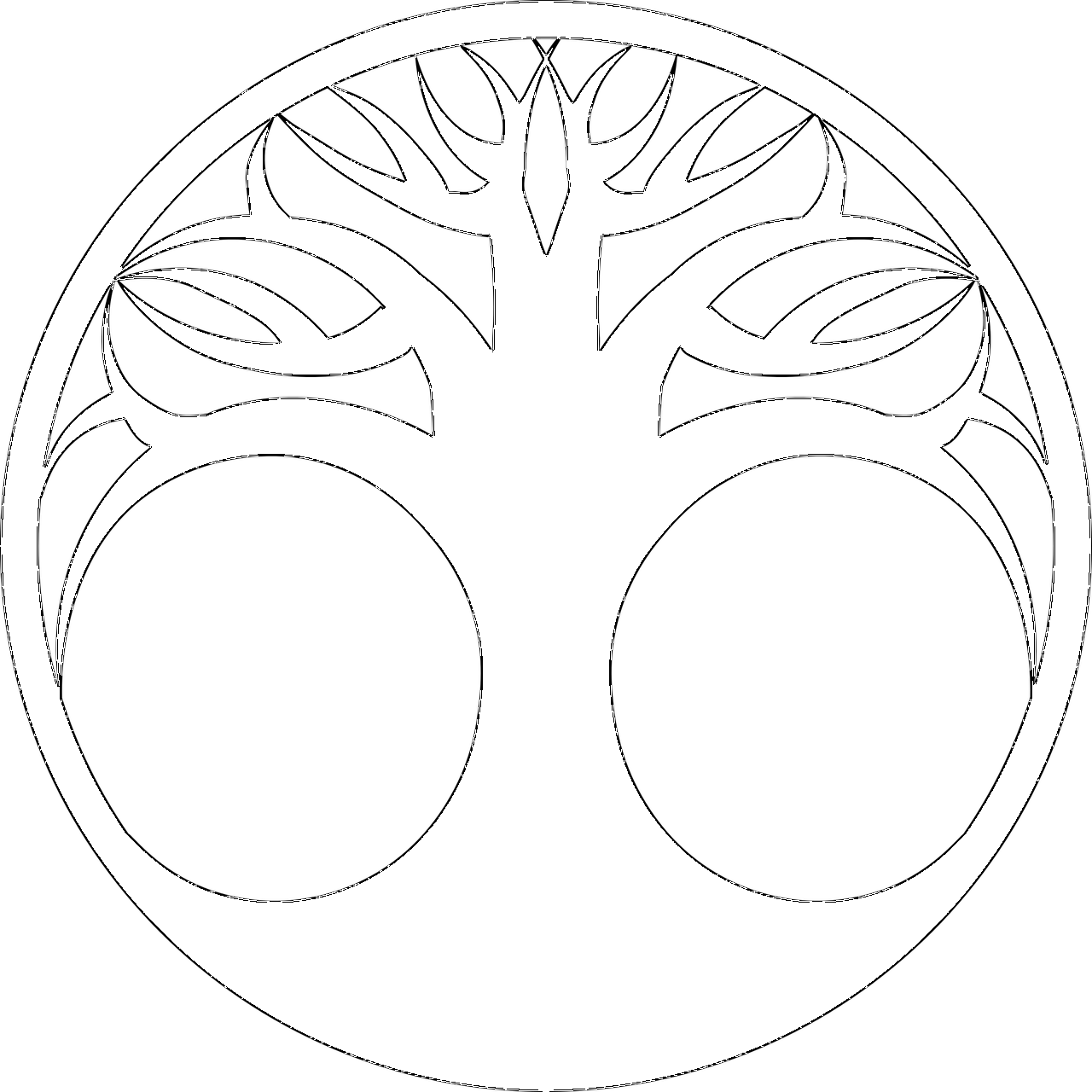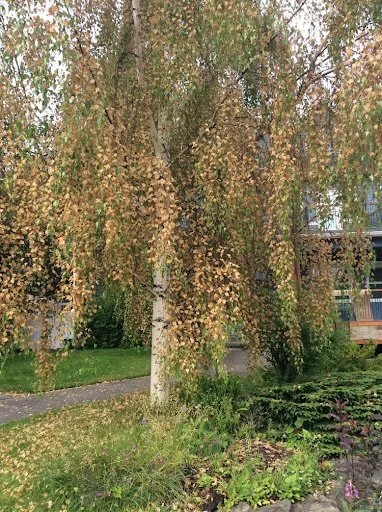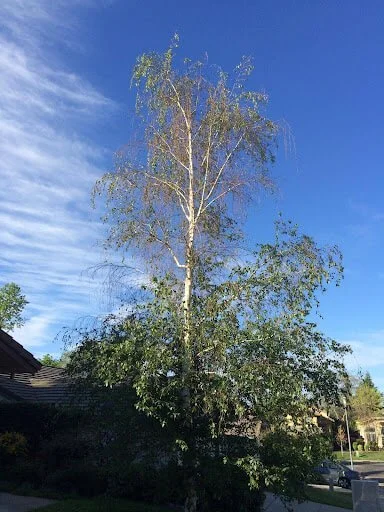Why Is My Birch Tree Dying?
Recognizing Birch Leafminer and Bronze Birch Borer in Cochrane
Are your birch leaves turning brown and papery in summer? Is the bark cracking or peeling? Are branches at the top of the tree slowly dying back?
These are common signs of two major threats to birch trees in Cochrane and NW Calgary:
Birch Leafminer
Bronze Birch Borer
Both insects attack birch trees already under stress — and if left unchecked, they can cause serious long-term decline or even death. But there’s good news: with early intervention and the right regenerative treatments, your birch can recover.
What’s Attacking My Birch Tree?
Let’s look at the two most common culprits:
1. Birch Leafminer
Leafminers are tiny sawfly larvae that feed inside the leaves of your birch tree. Adults lay their eggs in spring, and when the larvae hatch, they tunnel between the upper and lower surfaces of the leaf — causing visible damage from within.
How to spot it:
Brown or yellow blotches between leaf veins
Leaves may feel papery or dry, but won’t fall off right away
Often appears by early to mid-summer
Most common in Weeping Birch, Paper Birch
While it usually doesn’t kill trees on its own, repeated infestations weaken your birch over time, opening the door to much more serious problems — like the Bronze Birch Borer.
2. Bronze Birch Borer
The Bronze Birch Borer is a flatheaded beetle that lays its eggs on the bark of stressed birch trees. When the larvae hatch, they bore into the cambium layer, feeding on the tree’s vital tissues and cutting off water and nutrient flow.
Signs of infestation:
Dieback from the top of the tree downward
Sparse foliage or entire limbs not leafing out
Peeling or loose bark, especially higher up
D-shaped exit holes from adult beetles emerging
Often found following years of leafminer damage or drought stress
This is the pest that kills birch trees. Once it gets established, it can be fatal — especially if the tree has been weakened by repeated leafminer damage or poor soil condition
Why It’s Happening: A Root-Level Issue
Neither of these pests are the real problem — they’re the symptom of a deeper issue: stress.
Birch trees in urban settings often struggle because of:
Soil compaction from lawnmowers, foot traffic, or construction
Low microbial activity in the root zone
Shallow roots and poor water absorption
Overuse of synthetic fertilizers, leading to nutrient imbalance
Drought stress, especially in exposed or south-facing yards
As research from Dr. Thomas Dykstra has shown, insects like borers and leafminers are biologically attracted to trees emitting stress signals. Healthy, balanced trees do not attract pests — it’s the distressed ones that get targeted.
Why Chemical Sprays Won’t Save Your Birch
It’s tempting to fight back with sprays or injections, but unfortunately, they offer little long-term benefit and often make the problem worse.
Chemical insecticides may kill some pests, but also eliminate beneficial insects like ladybugs, wasps, and microbial allies.
Systemic insecticides can harm pollinators and degrade the soil food web your tree depends on.
Synthetic fertilizers promote fast, weak growth — making your birch even more attractive to pests next season.
What Can You Do Instead?
The best way to help your birch tree is to restore its natural defenses from the ground up.
Organic Bioactive Tree Treatments – Our foliar sprays and deep root inoculations deliver a blend of beneficial microbes, humic substances, and natural nutrients to restore balance in your tree’s internal chemistry and root zone. Healthier trees stop attracting pests — period.
Tree Health Consultations – We assess your birch’s condition, identify signs of both leafminer and borer activity, and recommend a targeted, regenerative recovery plan.
Structural Pruning – Thinning the canopy can reduce stress and improve airflow, especially for birch trees with dense or tangled crowns. In some cases, removing deadwood helps prevent further borer entry.
A Regenerative Approach to Birch Tree Health
At Cochrane Tree Care, we don’t just manage pests — we restore health.
Instead of chasing bugs with chemicals, we focus on building resilience through biology. Our regenerative treatments strengthen root systems, enhance natural defenses, and improve long-term vitality — so your birch can thrive, not just survive.
Take the Next Step
If you’re seeing signs of leafminer or borer damage in your birch tree, don’t wait — early intervention makes all the difference.
👉 Book a Tree Health Consultation – Spend 30–60 minutes with Kurt inspecting your birch, identifying stress factors, and exploring treatment options.
👉 Explore Our Organic Tree Treatment Program – Four visits per year, starting at $399 for small properties. Includes foliar sprays and/or deep root injections tailored for birch trees.
👉 Request a Quote or Upload Photos – Quick form to help us understand your concerns and respond with solutions.
About Kurt & Cochrane Tree Care
Kurt Stenberg is a regenerative arborist, permaculture practitioner, and certified arboriculture instructor with Arboriculture Canada. He also hosts the Arborist Blueprint Podcast, helping arborists across the world shift toward tree health-first practices.
At Cochrane Tree Care, we specialize in tree consultations, organic treatments, and sustainable solutions for long-term tree vitality.



